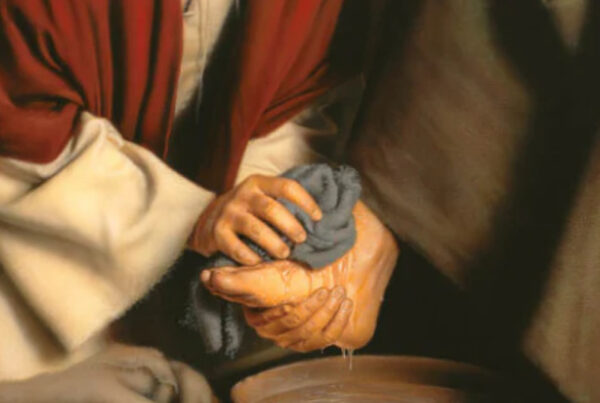The Song of Songs: Chapter 7
In the last verse of Chapter six, we read for the first time that the man calls the woman “the Shulammite.” This seems to be a nickname for her; it is based on the “name of Solomon, which is Hebrew for Shlomo, a word related to shalom, the word for peace and wholeness.” To call the woman by this name was like saying, “She is the one with Solomon.” Their names identified them as being very close; they were unified, like two parts of a whole. The second part of the verse suggests that they want privacy and that the friends will not gaze on their “dance.”
What follows in chapter seven closely resembles their wedding night as recounted in chapter four. It would seem that, after they have resolved their differences, they are closer than ever; that joy of being together again and more intimate, spills over into physical love, and they have sex.
This passage, however, does differ noticeably from the previous passage. In Solomon’s day, feet were unclean. This outlook continues in much of the Middle East today where it can be an insult to show someone the bottom of your feet. In the culture of Solomon’s day and in wealthy homes, a servant would remove a guest’s sandals. Notice the contrast between verse one of chapter seven and the beginning of chapter four where the man begins at her head and face. Here, in verse one, Solomon not only takes a humble position in front of his wife by beginning at her feet, he also compliments what would be culturally considered unclean. Love, grace, humility and forgiveness all rolled into one image.
Instead of moving down her body, he moves up. Married women in Solomon’s day did not show their mid-sections. No other men would have seen her body except her husband. As such, when he describes her legs and waist, he was complimenting what was very private, just between the two of them and only for the pleasure of the two of them. When he compares her breasts to gazelles, he uses the same language of their wedding night, calling to mind her youthful beauty and the joy of that time together.
Another noticeable difference with this passage is that his descriptions of the woman encompass more than just her beauty; they also express his appreciation for her whole person. The reference to a tower communicates strength. The pools show refreshment and possibly holiness since the pools of Bath Rabbim were near Heshbon, a Levitical city; the pools were likely the place where the priests would ceremonially cleanse themselves. This profound imagery is how Solomon mentions the beauty of her eyes. He also seems to see her as an ally, standing by him, since the tower of Lebanon faced Damascus, the seat of power for Assyria, an ongoing enemy of Israel.
They have worked out their differences in a healthy way, are closer than ever and are enjoying the intimacy that comes with their renewed, deeper relationship.
Key Verse:
“I belong to my lover, and his desire is for me.” ~ Song of Songs 7:10
Questions to ponder:
- What conflicts have you experienced that turned destructive? How might things have gone differently if you and the other person had handled it differently?
- What areas of your loved one do you take for granted? How can you think through his or her good qualities and communicate those to him or her?


